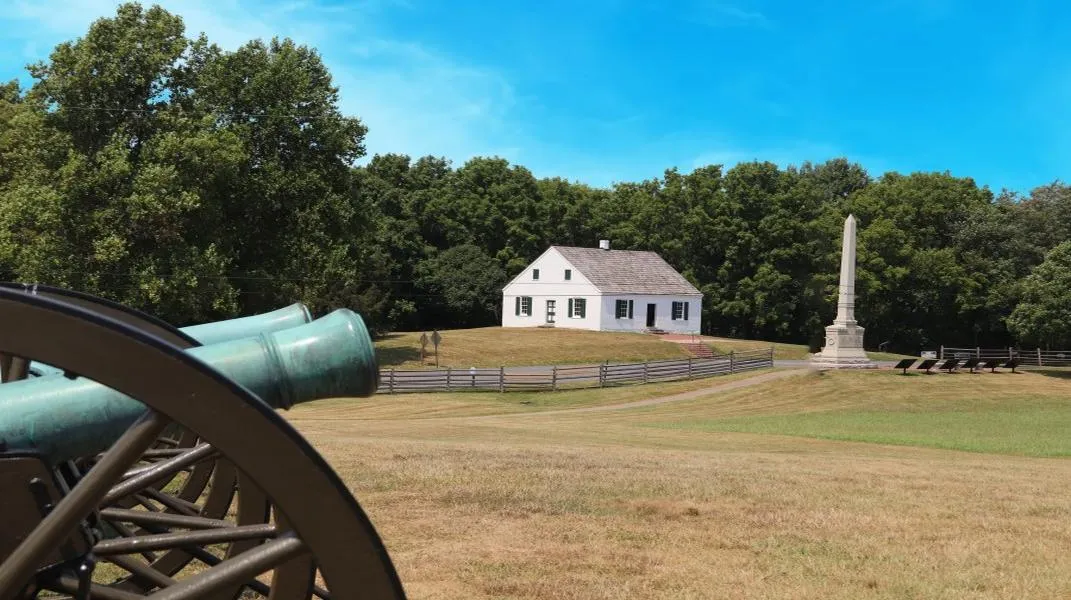Exploring Antietam National Battlefield: A Journey Through History
Antietam National Battlefield, located in Sharpsburg, Maryland, is one of the most significant historical sites in the United States. This hallowed ground marks the scene of the Battle of Antietam, fought on September

Historical Significance of Antietam
The Battle of Antietam was pivotal in the American Civil War for several reasons. It marked a significant strategic turning point for the Union Army. Following the battle, President Abraham Lincoln issued the Emancipation Proclamation, which declared the freedom of all enslaved people in the Confederate states. This transformed the war from a battle for the Union into a moral crusade against slavery, fundamentally altering the course of American history.
The battle itself involved approximately 130,000 troops, with over 23,000 soldiers killed, wounded, or missing by the end of the day. The engagement featured some of the most intense fighting seen during the war, with key locations such as the Sunken Road (later known as "Bloody Lane"), the Cornfield, and Burnside Bridge becoming etched in the annals of American military history.
The Battlefield Today
Today, Antietam National Battlefield spans over 3,250 acres and offers visitors a chance to step back in time and reflect on the events of that fateful day. The park is beautifully preserved, with walking trails, historical markers, and monuments commemorating the soldiers and their sacrifices. Visitors can explore the landscapes that shaped the battle, including rolling hills, cornfields, and the picturesque Antietam Creek.
Visitor Center
The Antietam Visitor Center serves as the starting point for any visit. Here, you’ll find a wealth of information about the battle, including exhibits, artifacts, and a 26-minute film that provides an overview of the battle and its significance. The knowledgeable park rangers are on hand to answer questions and provide recommendations for exploring the battlefield.
Walking and Driving Tours
The battlefield is designed for both walking and driving tours. A 10-mile auto tour route winds through the key sites of the battlefield, including the following notable locations:
- The Cornfield: This area saw some of the most intense fighting, with soldiers from both sides clashing amidst the tall corn stalks.
- The West Woods: A dense area of trees that became a deadly battleground, marked by significant casualties.
- Burnside Bridge: This iconic bridge was the site of fierce combat and is one of the most photographed locations in the park.
- The Sunken Road/Bloody Lane: This trench-like formation became a focal point of the battle, resulting in heavy casualties.
- The National Cemetery: Located adjacent to the battlefield, this cemetery honors the Union soldiers who fell during the battle and subsequent conflicts.
Monuments and Memorials
Throughout the battlefield, visitors will encounter numerous monuments and memorials dedicated to the soldiers who fought there. These tributes serve as a reminder of the bravery and sacrifice displayed during the battle. Some notable monuments include:
- The 1st Maryland Infantry Monument: Honoring the Maryland troops who fought valiantly during the battle.
- The 20th Massachusetts Infantry Monument: Recognizing the bravery of this regiment, which suffered heavy losses during the fighting.
- The Confederate Monument: Erected to honor the Confederate soldiers who fought and died at Antietam.
Preparing for Your Visit
A trip to Antietam National Battlefield is not only an opportunity to learn about history but also a chance to enjoy the natural beauty of the area. To make the most of your visit, here are some essential materials and tips to prepare:
1. What to Bring
- Comfortable Footwear: The battlefield covers vast areas, and much of the exploration involves walking. Wear sturdy shoes suitable for hiking.
- Weather-Appropriate Clothing: Check the weather forecast before your visit. Layered clothing is advisable, as temperatures can fluctuate throughout the day.
- Water and Snacks: Hydration is essential, especially during warmer months. Bring a refillable water bottle and some snacks to keep your energy up while exploring.
- Camera/Smartphone: Capture the stunning landscapes and historical monuments. However, remember to be respectful and avoid climbing on monuments for photos.
- Notebook and Pen: If you're a history buff, consider bringing a notebook to jot down thoughts, reflections, or interesting facts you learn during your visit.
2. Navigational Aids
- Maps: Obtain a battlefield map from the Visitor Center or download one from the National Park Service website. This will help you navigate key sites and understand the layout of the battlefield.
- Guided Tour Apps: Some mobile apps provide audio-guided tours of the battlefield, allowing you to explore at your own pace while still receiving insights into the history of the area.
3. Plan Your Itinerary
Decide in advance how much time you plan to spend at the battlefield. A half-day visit can cover the Visitor Center and a driving tour, while a full day allows for additional walking tours and time at the National Cemetery. Here’s a suggested itinerary:
- Morning: Start at the Visitor Center for the film and exhibits, then embark on the auto tour, stopping at key locations.
- Lunch: Pack a picnic or head to nearby Sharpsburg for a quick meal.
- Afternoon: Take a walking tour of the Cornfield and Sunken Road, and visit the National Cemetery. Consider joining a ranger-led program if available.
4. Educational Resources
If you want to enhance your understanding of the Civil War and the Battle of Antietam, consider reading books or watching documentaries prior to your visit. Some recommended titles include:
- "Battle Cry of Freedom" by James M. McPherson: A comprehensive history of the Civil War.
- "Antietam: The Soldier's Battle" by John P. Sutherland: A detailed account of the battle from the perspective of the soldiers who fought.
- Documentaries: Look for documentaries about the Civil War and the Battle of Antietam on platforms like PBS or History Channel.
5. Respect the Site
Lastly, remember that Antietam National Battlefield is a place of reflection and remembrance. Be respectful of the site, the monuments, and other visitors. Follow park rules, stay on designated paths, and dispose of trash properly.
Conclusion
Antietam National Battlefield is a profound testament to a tumultuous period in American history. Visiting this historic site offers a unique opportunity to connect with the past and honor the sacrifices made by countless soldiers. Whether you're a history enthusiast, a nature lover, or someone seeking a meaningful experience, Antietam provides a rich and educational journey.
As you prepare for your visit, keep in mind the materials and tips outlined above to ensure a memorable and impactful experience. The echoes of the past resonate through the fields and forests of Antietam, inviting you to explore, reflect, and remember.




